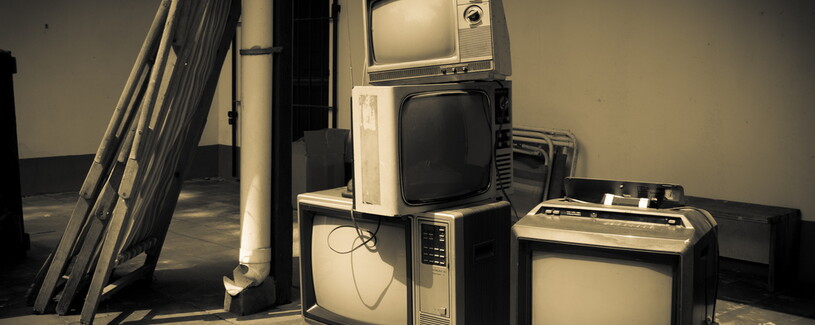Dare To Go Zero
Why More TV Could Mean More Recycling

The choice between filling the land with garbage, or “landfilling,” and recovering resources from our trash sounds like an easy one. A preference for resource recovery seems even more obvious given the land-deficient world we live in. But reality seldom favors the obvious. The city of Austin, Texas, where I’m working as an Alcoa Foundation fellow this summer, diverts only 31 percent of its waste, leaving 69 percent to be landfilled.
With urban landfills reaching capacity as quickly as they are—available landfills have declined from 5,812 in 1991 to 1,908 in 2011—waste disposal costs are exorbitant, and rising. This increase in landfilling costs is a bittersweet problem. On the one hand, people have to pay more to discard their waste, which is especially taxing in tough economic times. On the other hand, higher prices can serve as a motivation to move toward resource recovery as opposed to waste disposal.
Austin is an exception to the trend of rising prices. The city still experiences low landfilling costs that provide little incentive to move people towards recycling. In such a scenario, education and enforcement, in that order are the best bet for the city to shoot up its diversion rates. Because enforcement does not make sense until the message of recycling has reached people loudly and clearly, public outreach is a key underlying step. To this point, Austin Resource Recovery (ARR), the waste management and resource recovery department of the city, has conducted a variety of outreach campaigns over the past five years, and especially since the 2011 adoption of its Zero Waste Master Plan. One of these campaigns is Dare To Go Zero—perhaps the most creative outreach and citizen engagement efforts around recycling devised by any municipality in the country.
 Dare To Go Zero was a weekly reality TV show featured on Austin’s local channel 6 and on YouTube. Hosted by an ARR employee, the show aired for five weeks in the spring of 2011 and drew a wide audience—over 7,000 views on YouTube alone, and about 63,000 total online impressions. The show dared four Austin families to reduce their trash by diverting it to recycling and composting and, through this, strove to increase Austinites’ awareness about how to reach zero waste and avoid contamination of the recycling stream. Out of 52 applicants, eight families were chosen for an on camera audition, from which the final four participants were selected. Every episode included a “dare” that tested the families on their knowledge of waste reduction, recycling, and composting; the winning teams received a prize each week. The families also participated in weekly recycling and composting classes run by ARR that provided information about waste reduction. Each episode concluded with a weigh-in of the waste generated over the preceding week by each of the four families. At the end of the fifth episode, the family that reduced its waste by the largest percentage won a home improvement kit worth $2,000.
Dare To Go Zero was a weekly reality TV show featured on Austin’s local channel 6 and on YouTube. Hosted by an ARR employee, the show aired for five weeks in the spring of 2011 and drew a wide audience—over 7,000 views on YouTube alone, and about 63,000 total online impressions. The show dared four Austin families to reduce their trash by diverting it to recycling and composting and, through this, strove to increase Austinites’ awareness about how to reach zero waste and avoid contamination of the recycling stream. Out of 52 applicants, eight families were chosen for an on camera audition, from which the final four participants were selected. Every episode included a “dare” that tested the families on their knowledge of waste reduction, recycling, and composting; the winning teams received a prize each week. The families also participated in weekly recycling and composting classes run by ARR that provided information about waste reduction. Each episode concluded with a weigh-in of the waste generated over the preceding week by each of the four families. At the end of the fifth episode, the family that reduced its waste by the largest percentage won a home improvement kit worth $2,000.
The efforts were recognized throughout the country and the Austin received appreciation emails and calls from several municipalities. Cities such as Irvine, CA and Ventura, CA wrote to ARR with queries to replicate the show in their municipalities. The International Association of Business Communicators awarded Dare To Go Zero the 2011 Silver Quill Award of Merit in the category of Social Responsibility.
Dare To Go Zero proved an excellent tool of community outreach with a potential to be replicated worldwide. It is one of the many measures adopted by the city to achieve its zero-waste goals and demonstrates an interesting lever of behavioral change. It also has the capacity to produce neighborhood recycling and composting mentors, with the families that participated serving as a kind of lighthouse to drive community-level recycling initiatives and mobilize the public.
This is a critical time, with municipalities around the country designing and implementing zero-waste goals. Theoretically, it may seem like a simple shift, but it is surprising how challenging correct recycling can be. Even with moves toward single stream recycling, and even given rising costs, the task of truly getting it right continues to be a burden. Public outreach and education is therefore imperative for cities aiming to bump up their diversion rates. One good approach may be for U.S. cities to dare to Dare to Go Zero.
Snigdha Garg is a master’s student at the Yale School of Forestry and Environmental Studies. Her studies focus on urban sustainability and resilience planning. This summer she is working with Austin Resource Recovery to improve the city’s recycling rate in accordance with their zero waste goals.
Photo from Gustavo Devito/flickr